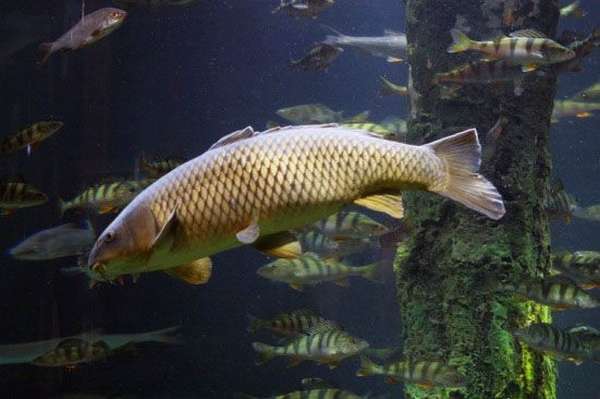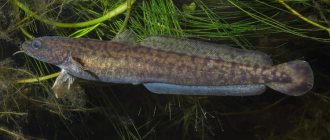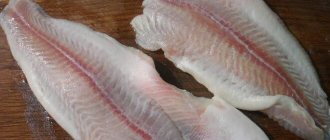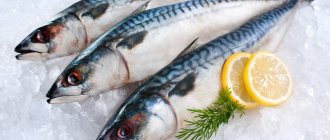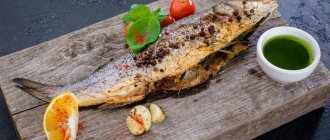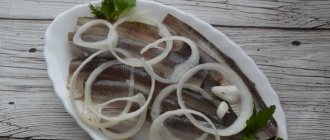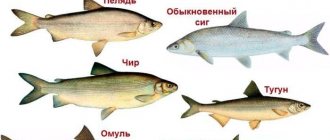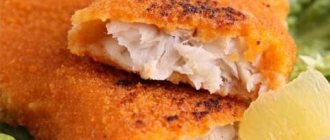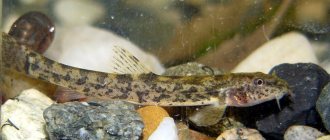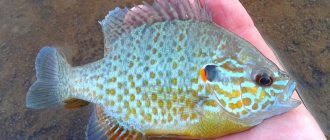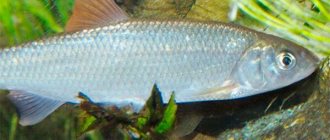Corydoras changeable
All aquarium fish differ in their habitat in a certain layer of water. The lowest water level is home to bottom-dwelling fish, most of which are peaceful and friendly creatures that are easy to care for. These aquarium inhabitants are well compatible with almost all types of other fish, and some of their representatives perform a useful function in the aquarium, cleaning it from various impurities.
Bottom fish include all kinds of fish from different families, many of them have external similarities such as antennae or sharp spines that serve them for protection. Most bottom-dwelling fish are hardworking, they perform a cleaning function in the aquarium and have a calm disposition.
Catfish
The most extensive group of representatives of bottom fish are catfishes, the number of their species exceeds 2000 names. All varieties have antennae located near the mouth, some types are protected by armor. Catfish relieve the owner from the problem of food residues at the bottom of the aquarium by eating it and preventing water spoilage by pathogenic bacteria. Catfish get along well with most fish due to their peaceful nature.
Ancistrus vulgaris
Ancistrus
Armored catfish Ancistrus are also called “suckers” or “stickers” due to their ability to stick to the surface of glass or other objects in the aquarium. Thus, the fish scrape off algae and other plaque, cleaning the container and bringing great benefit to all the inhabitants of the aquarium. Ancistrus has a flattened, elongated body; males are distinguished by the presence of “horns” on their heads. A special feature is elongated lips with horn-like suckers directed downwards. The color range depends on the type of ancistrus, gray-brown shades predominate.
Corridoras
Corydoras belong to the family of armored catfish and there are more than 100 species. The fish reach 5-12 cm in length and have a short body with a high back. Their color varies more not by color, but by combinations of spots and stripes on the body. Corydoras are schooling and peaceful aquarium fish, they practically do not conflict for food and get along with a large number of aquarium inhabitants. These bottom-dwelling catfish are content with what falls to the bottom; the optimal food is dry granular food. Popular varieties of corydoras include panda, adolpha, pygmy, bronze, Venezuela orange and golden.
Agamixis
This catfish is quite popular in aquariums; it is distinguished by its peaceful nature and longevity. It reaches 10 cm in size and can live up to 17 years in good conditions. Agamixis fish love to dig soil, so they use coarse-grained soil laid in a thick layer on the bottom as a substrate. The fish becomes active in the dark and feeds on plant, frozen and live food. Breeding of agamixis in captivity occurs rarely, possibly through artificial stimulation.
Return to content
Roach
One of the most common and popular fish, living in almost all domestic reservoirs. The maximum weight reaches three kilograms. Roach fishing is active all year round, with the exception of two spring months. It is recommended to use worms, white bread, and maggots as bait.
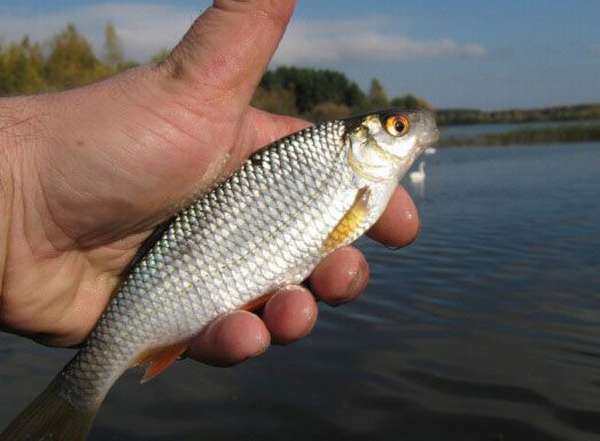
The list of bottom fish living in Russia can be continued endlessly. The most common and popular types are listed above. Knowing the characteristics and preferences of fish will make fishing as effective and exciting as possible. As they say, no scales, no tail!
Loaches
The loach family belongs to the order Cyprinidae and includes 30 genera and 150 species. The fish reach up to 15 cm in size and most of them are distinguished by the presence of a folding spike, which serves as protection against attacks by fish and birds.
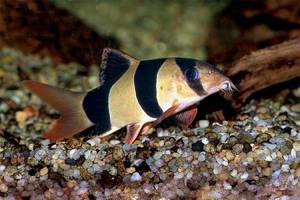
Botia clown
Bocia
These bottom-dwelling fish have a torpedo-shaped body with a flat belly and triangular in cross-section. The muzzle is pointed, surrounded by 6-8 antennae. There are suction cups on the ventral fins and chest, with the help of which the fish eat algae from stones and snags. It is recommended to keep them in a flock, since when alone they are prone to aggression. When in danger, the fish release their spines with a click and fix them horizontally. There are different types of botia: zebra, clown, striped.
Acantophthalmus
These aquarium fish have a unique snake-like body structure. The color is quite elegant, with transverse stripes running across the orange background of the body. These bottom-dwelling fish reach up to 10 cm, have antennae near their mouths, and sharp spines under their eyes. Acantophthalmus likes to burrow into the soil, which should be soft in the aquarium. Like other representatives of the loach family, these fish acutely sense pressure changes, rise to the surface and become active.
Return to content
List of commercial river fish
Freshwater fish in our country are numerous and diverse: now different sources describe about 200 species. Oddly enough, a complete list and catalog of freshwater fish in Russia does not yet exist. Most of them are of commercial importance. These include not only those species that are caught by fishing cooperatives or bred artificially. Commercial fish also include all species that can be caught by recreational fishermen. Among river fish there are a lot of migratory fish that enter rivers only to spawn and spend most of their lives in the sea, for example taimen, pink salmon and salmon and some others. We will try to list the most common commercial river fish that live in the reservoirs of our country:
White amur
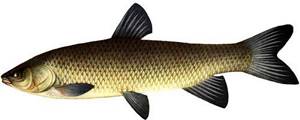
A commercial fish that falls into the hands of amateur fishermen is quite rare. It has high ecological plasticity, fast growth rates and high taste qualities. Since carp is completely herbivorous, it is a valuable species for cleaning water bodies from excess aquatic plants. Reaches a weight of 20-30 kilograms and a length of more than 1 meter. Inhabits the basins of the Amur, Don, Volga, Dnieper, and Yenisei. It is found in reservoirs and lakes with abundant vegetation, and can enter large rivers.
Up
Chub
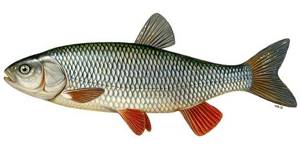
A very common strong and omnivorous fish in the middle zone, it has a massive body and head, its weight reaches 4-5 kilograms, and its length is up to 80 centimeters. This fish is often found in rivers flowing into the Baltic, Black and Caspian seas. For habitats, the chub prefers rivers with fast currents and rifts, where there are not many other species of carp fish. Chub is a constant target for amateur fishermen.
Up
Gustera

A widespread, medium-sized fish of the carp family with a tall and flattened body, which resembles the more famous bream. It lives in rivers with medium and weak currents, with a hard clay or sandy bottom. Silver bream is a fairly common, but low-value fish; its meat is rather bony, however, due to its gluttony, it is constantly found in the catches of amateur fishermen. It lives in rivers of almost the entire European part.
Up
Dace
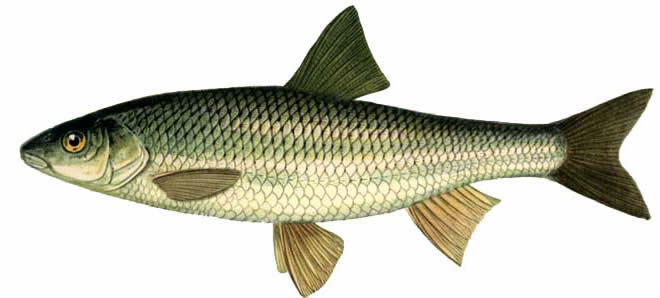
A species widespread in our water bodies. This schooling, fast and nimble fish, with a narrow body, chooses the bottom parts of reservoirs with fast currents for its habitats. It can be found in all rivers of the European part of Russia. Its weight reaches 400 grams, length - 20 centimeters. It is the object of mostly recreational fishing.
Up
Ruff
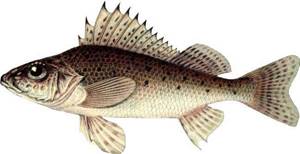
This small-sized fish has always been considered a weed, as it often destroys the eggs of more noble representatives of the fish kingdom. A characteristic feature of the ruff is its dark color and the presence of sharp poisonous spines. Despite their small size, ruffs are valued in cooking: it is believed that fish soup made from ruffs is the best. The ruffe lives in rivers with weak currents and cool water, always sticking to the bottom. The maximum size is about 10-18 centimeters, weight - up to 160-190 grams. It lives throughout our country.
Up
Asp
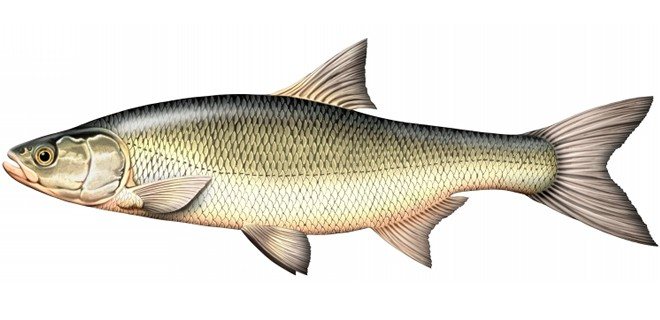
A predator in the carp family. A powerful and beautiful fish that lives in the rivers of the Northern, Baltic, Black and other seas. Mostly found on rivers of the plains with relatively moderate currents. The weight of the fish can reach 5 kilograms, size up to 80 centimeters. The asp lives on river beds and stretches, in the upper and middle horizons. A large asp lives alone. It is a pelagic predator (actively searching for its prey).
Up
crucian carp

A very common fish in our country. It lives in reservoirs with stagnant water, but it is not uncommon to catch crucian carp in fairly large rivers with medium or weak currents. Crucian carp is a cautious fish, omnivorous, easily tolerant of unfavorable natural conditions. It lives throughout the European and Asian parts of Russia in reservoirs with a soft bottom and the presence of aquatic vegetation. In size it can reach 2 kilograms in weight and 40 centimeters in length.
Up
Carp
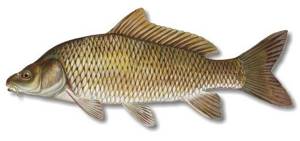
One of the most important fish species in both commercial and recreational fishing due to its size and growth rate. Carp is a form of carp. This is a beautiful, large fish with thick scales, distributed in almost all regions of our country, which was greatly facilitated by its artificial breeding and industrial importance. It lives in lakes and rivers with relatively weak currents and vegetation. This fish can reach 20 kilograms in weight and 1-1.2 meters in length.
Up
Klepets
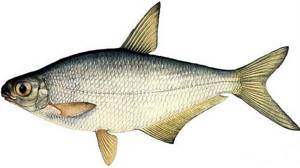
A medium-sized fish with a very flattened body of silver color, reaching a size of no more than 25 centimeters with a weight of about 450 grams. The species is found exclusively in Russia, and only in central and southern Russia. Lives in the Volga, Dnieper, Dniester, and Don. This fish sticks to fast and deep places in large rivers. This fish is not commercially caught, however, it can be found in the catches of amateur fishermen.
Up
Smelt
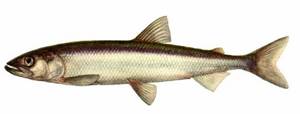
Fish of the salmon family. It lives in both the Asian and European parts of the country (Asian and European varieties). Distributed in rivers of the northern seas. This is a very beautiful silver-colored fish with a brownish-green back. Its size is insignificant, however, it is of particular interest for both amateur and industrial fishing. Smelt is one of our most ancient fish. Has industrial significance.
Up
Rudd
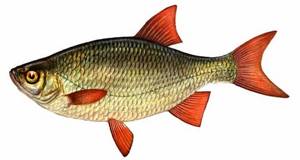
Not the largest, but one of the most beautiful fish in our rivers. A massive, tall body with a reddish tint, bright red fins, and red eyes make this fish an object of both commercial and recreational fishing. The culinary characteristics of this fish are not the best. Distributed in river basins of all seas of the European part, found in Siberia and the east. To live, the rudd chooses places with a slight current, where reeds, water lilies and other vegetation grow in abundance. The mass of this fish reaches several kilograms, length up to 35-40 centimeters.
Up
Bream
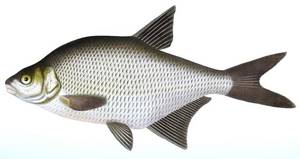
A fish that has always been a very attractive trophy for all fishermen and an important fishery object. Of all the carp, bream is the most delicious. This schooling large fish, having a tall, flattened body of light or dark color, lives near the bottom layer of reservoirs. He is omnivorous. It is more common in the European part; in the eastern part it is bred artificially. From habitats it selects places with a small current and great depth, as well as the presence of a hard clay or sandy bottom. Its weight can reach 8 kilograms, size up to 70 centimeters. Has industrial significance.
Up
Tench
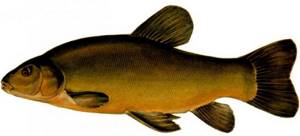
Tench is a representative of the carp family with a tightly built body, small greenish-golden scales, the color of which depends on the soil, characterized by heat-loving, inactive and slow growth. This fish can be found in lakes or reservoirs, but it can also appear in rivers with very weak currents; it often stays near the bottom in the coastal zone. Its weight reaches 1-2 kilograms, size up to 60 centimeters. Distributed in the European part of the country.
Up
Salmon
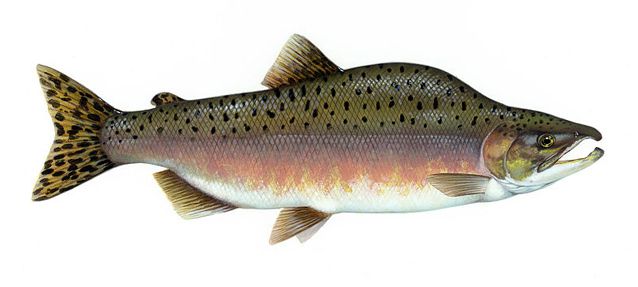
Salmon is a collective name for many members of the salmon family of fish. These fish representatives are both freshwater and anadromous. All salmon have tasty and nutritious meat, and therefore their commercial catch is of great importance. Salmon itself is often called salmon. The average weight of salmon can reach 7 kilograms. Different subspecies of spawning salmon are found in the Dvina, Neva, Pechora basins, rivers of the Far East and the Caspian basin.
Up
Burbot
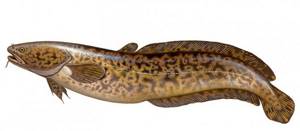
The only cod found in fresh water bodies of our country. The appearance and strange lifestyle remind us that the fish is relict. Burbot is a cold-loving, predatory, solitary fish with a snake-like body that lives in the northern part of Russia. This is a valuable commercial species, the liver of which is a delicacy. The weight of burbot can reach 25 kilograms, the size is up to one meter. Burbot chooses very cold and clean rivers with a relief bottom, the presence of springs and deep holes.
Up
Perch
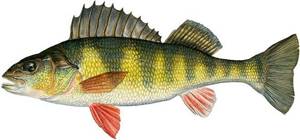
One of the most common types. It is found everywhere, both in large rivers and small streams with fresh water. It is not found except in mountain rivers. This is an exceptionally predatory fish with a beautiful coloration. Dimensions of perch: weight - up to 1 kilogram, length up to 40 cm. It is a real predator and its diet includes most of the fish of our strip. You can meet this fish both in a deep hole and in shallow coastal vegetation.
Up
Roach

This schooling freshwater fish is represented in huge numbers in our rivers. Along with some other species, it is the main object of fishing for amateur fishermen. She is always active in biting, and her meat is distinguished by its taste. The distribution area of this fish is huge and includes almost the entire territory of the country. The size of the roach is small: maximum weight up to 700 grams, length about 30 centimeters. In a reservoir, roach stays closer to the shore, to the coastal vegetation.
Up
Rotan
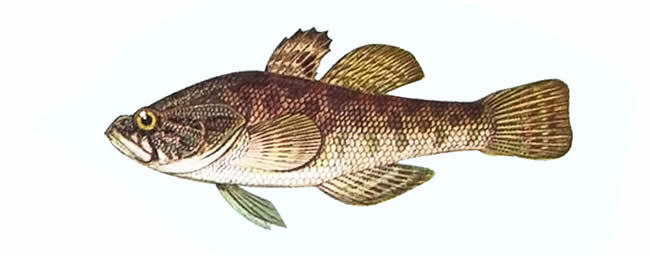
A predatory fish that appeared in our area relatively recently. This fish looks like a firebrand, which is why it got its interesting name “Amur sleeper firebrand”. The diet of rotan includes all living things that are found in the reservoir. It is phenomenally tenacious and capable of spreading rapidly. The color of rotan depends on the body of water in which it lives. Rotan has spread to the river basins of almost all the seas of our country. The size of this fish is small: the weight reaches only 500 grams, the length is up to 25 centimeters. In rivers it prefers oxbow lakes or places with relatively stagnant water.
Up
Carp
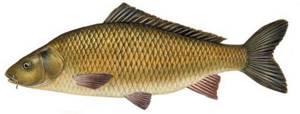
One of the strongest river fish of the carp family. It can be found in medium and large rivers with a small strong current; it lives in flocks, stays in bays, and avoids strong currents. There are specimens of carp weighing over 20 kilograms and more than a meter long. This fish lives in rivers flowing through relatively warm regions.
Up
Whitefish
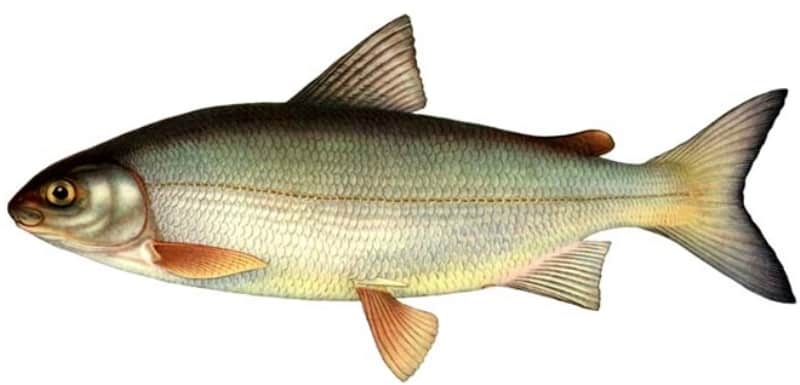
Whitefish is a valuable fish from the large salmon family that lives in the rivers of the northern region. There are many varieties of whitefish living in our country, externally differing in some characteristics. This fish prefers very clean and running water. Feeds on bottom organisms. Large whitefish reach 12 kilograms of mass and a length of about 50-60 centimeters. Whitefish meat is very valuable in its properties, which determines it as a fishery object in the northern regions.
Up
Som
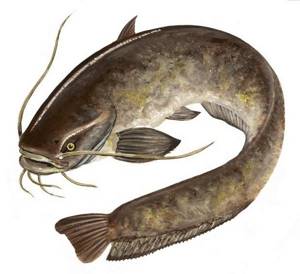
Catfish is the undoubted record holder in size among all our freshwater fish. Its weight can reach 300 kilograms, length up to 4-5 meters. This is a well-known fish that has a naked, scaleless body covered with mucus, a huge mouth with two long mustaches. This is the largest predator in our reservoirs, which does not disdain the remains of dead animals. The common catfish lives only in the European part. Catfish are heat-loving and it is unlikely to be found in the rivers of the northern zone. On rivers, catfish choose the deepest and most inaccessible places.
Up
Zander
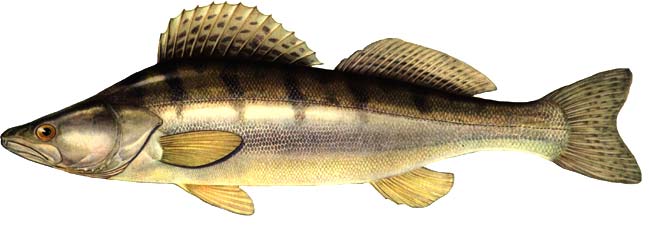
Pike perch is a cherished catch for the amateur fisherman and an important target for commercial fishing. The meat of this fish can rightfully be called a delicacy. Pike perch is exclusively a predator. It is widespread in deep rivers of the middle zone. It can reach a weight of 18 kilograms and a size of up to 1 meter in length. In rivers, pike perch lives in the deepest places; at night it comes out to the shallows for the purpose of hunting.
Up
Acne
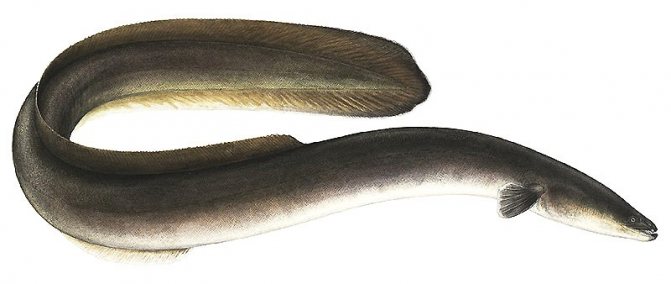
A fish that at first glance resembles a snake. Eel is considered a commercial fish with a weight of 500 grams. Eel meat contains a huge amount of useful elements and is highly valued. It lives mostly in the Baltic Sea basin. According to its lifestyle, it is a nocturnal bottom fish, feeding on fish and various invertebrates. Lives in deep places of the reservoir with the presence of a sufficiently large amount of oxygen.
Up
Ukleya

One of our smallest fish, up to 16 centimeters long, weighing up to 70 grams. Despite its small size, the fish is tasty and very fatty. Lives in the upper layers of fairly well-warmed water bodies. Found in most rivers of the European part of Russia. It lives in weak currents, in bays and creeks. It feeds on small insects, invertebrates and vegetation. It is not an object of industrial fishing, however, it is quite well appreciated by amateur fishermen.
Up
Trout

A beautiful fish of the salmon family, which has always been considered a delicacy among freshwater fish. Its meat is truly characterized by excellent culinary qualities. There are several subspecies of trout. Trout lives exclusively in clean rivers and lakes in the northern zone of Russia, the Caucasus and Transcaucasia. It reaches sizes up to 1-2 kilograms, length up to 80 centimeters, sometimes much more. It feeds on insects and larvae, young fish. It is popular both among amateur fishermen and in the fishing industry.
Up
Grayling
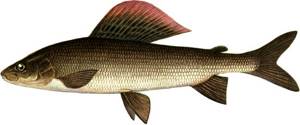
One of the most beautiful salmon fish. Grayling is distinguished from other species by its very high dorsal fin. Grayling has always been an object of interest for fishermen; its meat has a delicate taste, somewhat reminiscent of the taste of trout. Industrial fishing for this fish is still preserved, however, it is significantly limited. Grayling is common in rivers of northern latitudes. It can only be found in clean water with a fast current.
Up
Chekhon
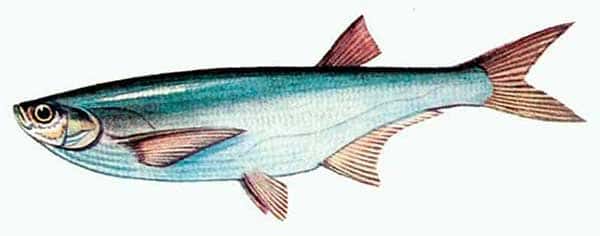
This fish cannot be confused with another. Its thin, saber-like body is its distinguishing feature. It is valued for its fatty, tender meat, suitable for consumption in various forms. In many regions, its fishing is limited due to a decrease in quantity. The saberfish lives in the basin of the southern seas of our country: the Caspian, Black and Aral. Lives in the upper layer, feeds on insects and larvae. Dimensions: up to 60 centimeters in length and up to 1 kilogram in weight.
Up
Pike
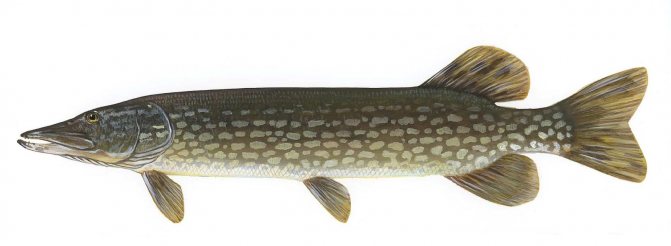
This is the most famous and widespread predator of rivers and lakes. Its gluttony often amazes fishermen. It attacks almost all types of fish, even those of equal size. Its entire structure indicates the validity of the fact that it is called the “river robber”. It can reach a mass of 35 kilograms and a length of up to 1.4 meters. Pike is widespread throughout our country. It has commercial significance and is a prey item for amateur fishermen.
Up
Ide
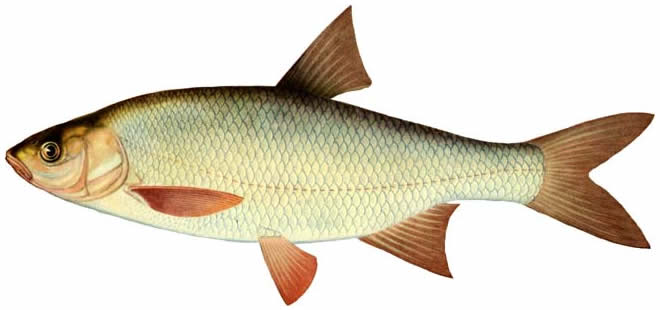
This is a large representative of our ichthyofauna. Its appearance is very beautiful: a tall body with scales that have a reddish or yellowish tint, and red fins. This fish is omnivorous. Does not refuse fish fry, insects, or plant foods. Ide dimensions: average weight -1-1.5 kilograms. It is distributed throughout our country. For living, it chooses places with calm currents and great depths; it can go out onto rifts and spits.
Up
Other types
Bottom inhabitants can belong to various representatives of many families and orders of fish. In addition to the common catfish, there are such interesting fish as Labeo from the carp family, Macrognathus from the proboscis family, Chukuchan fish and many others.
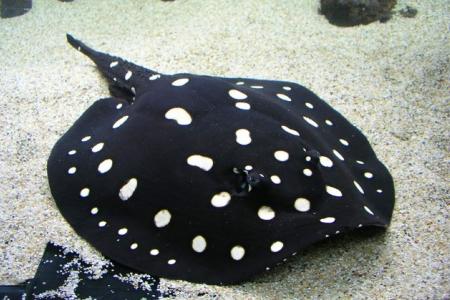
Scat motoro Leopoldi
Gyrinocheilus
Aquarium Gyrinoheilus of the Gyrinoheilovidae family is also called “Siamese algae eater”, which is native to the countries of Southeast Asia. In the aquarium, the fish reach up to 15 cm in length, have a suction cup-type mouth with wide lips, on which hard, rough plates are collected. Color ranges from gray-brown to greenish with spots. Gyrinocheilus has the additional ability to relieve the mouth of its respiratory function by passing water through the openings on the operculum.
Stingrays
Stingrays are considered rare and amazing aquarium inhabitants due to their unique external structure and intelligence. These freshwater predators belong to the shark family, so you should carefully choose their neighbors. The freshwater stingray is far from harmless; it has needles and spines on its tail that can cause acute pain. For 2-3 individuals you will need a 500 liter aquarium with a closed lid. Feeding occurs 2-3 times a day with live food in the form of small shrimp, fish fillets, tubifex and live small fish.
Mixociprinus
It is easier to call this fish from the Chukuchanov family “sailfish” or “frigate fish”. The fish is quite large, reaching up to 30 cm in an aquarium, and has a sail-shaped upper fin. The head and mouth are adapted for getting food from the bottom. The color is light beige with brown transverse stripes. The sailboat is peaceful despite its impressive size. In comfortable conditions, fish live up to 10 years.
Return to content
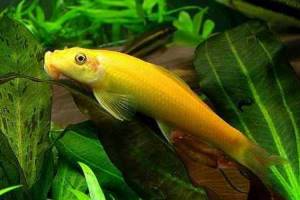
Girinocheilus siamese golden
Keeping in an aquarium
Due to their unpretentiousness, bottom fish take root well in the aquarium and live peacefully with their neighbors. Depending on the type of fish, the volume of the aquarium and water parameters may vary, temperature from 20-28°C, acidity 6-7.5, hardness 5-15. It is best to provide the fish with high-quality filtration and aeration, as well as regularly change the water. It is important to provide them with all kinds of shelters or plant dense thickets of plants, lay out snags and pots. Due to the love of bottom fish for digging in the ground, plants with strong roots or planted in a pot are suitable. The soil and lighting intensity are also selected taking into account the individuality of the fish.
Return to content
Food
Feeding bottom-dwelling fish is considered an important condition for their maintenance. After all, all aquatic inhabitants must be well-fed. To provide everyone with food, you can make a device from a plastic bottle. To do this, cut it and insert the upper part into a piece of plastic pipe or into a hose so that a funnel is formed. Pre-soaked dry food is placed in this device, after which the tube is carefully immersed in water to the location of the bottom fish. Dry food is suitable in the form of granules or special tablets. Depending on the size and type of fish, food is selected individually.
Breeding
Not all bottom fish, and especially some species of catfish, are able to reproduce in captivity. To stimulate reproduction, fish are given hormonal injections. For fish capable of reproducing in aquarium conditions, a separate spawning tank is usually prepared; the spawners are separated from each other by 2-3 weeks and fed generously. For gyrinocheilus, a separator mesh is placed on the bottom and the water flow is regulated. After spawning, the parents are removed and the fry are fed with live dust, ciliates and brine shrimp.
Return to content
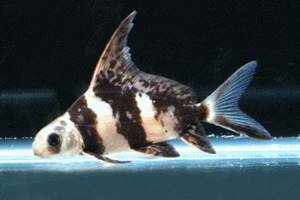
Mixociprinus
Carp
Carp prefers to live in reservoirs located in southern Russia. This is a large fish, whose maximum weight reaches twenty kilograms, breeds in lakes and rivers with rich flora, abundantly saturated with oxygen. Spring is the spawning period for carp, after which active biting begins. Given the large weight of the trophy, along with floats, fishermen use bottom gear. Carp readily bites on earthworms, maggots, and plant bait. All summer the carp experiences hunger, which fishermen are quick to take advantage of. Quiet fishing is successful fishing, as the carp is afraid of extraneous sounds.
